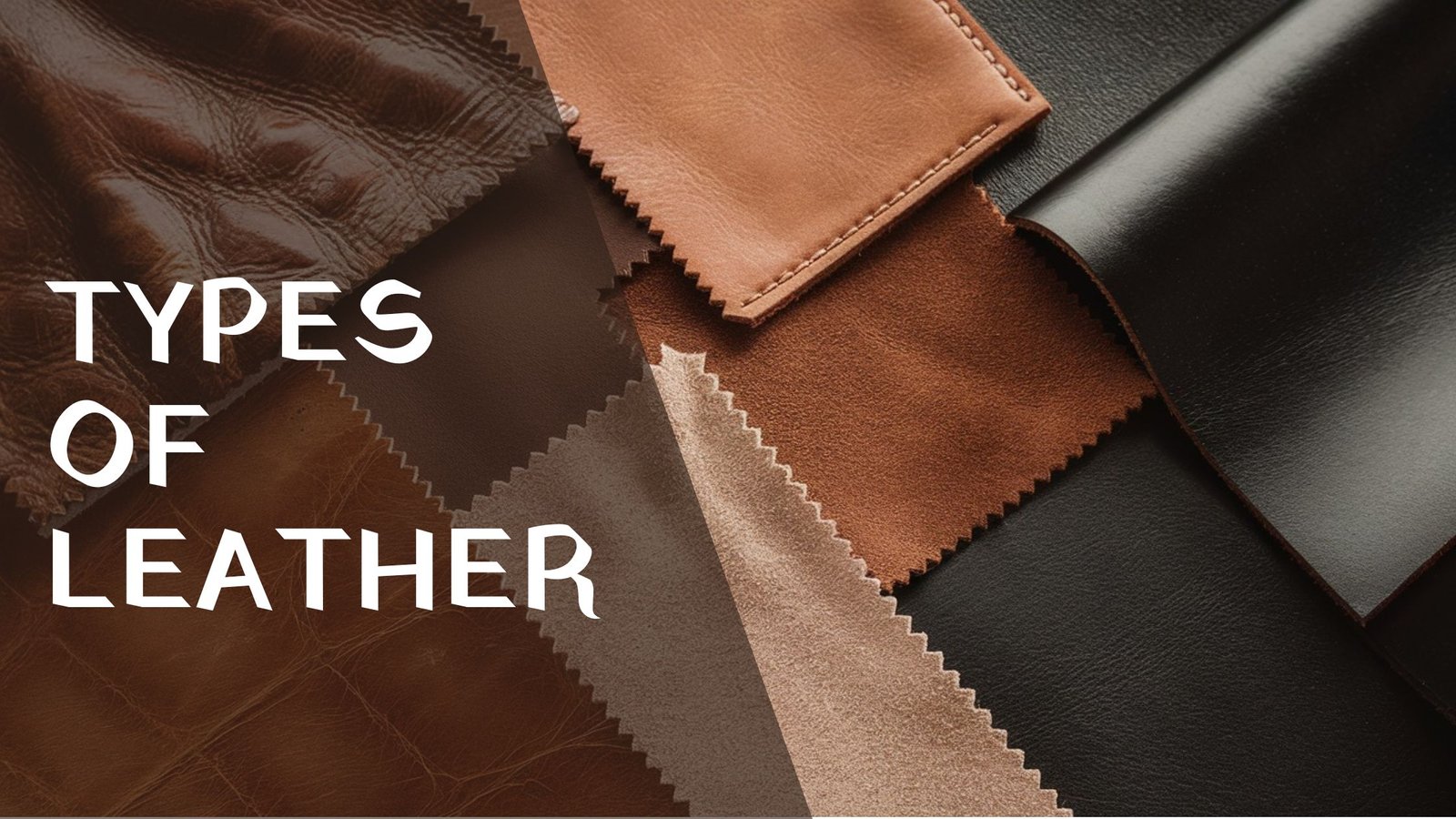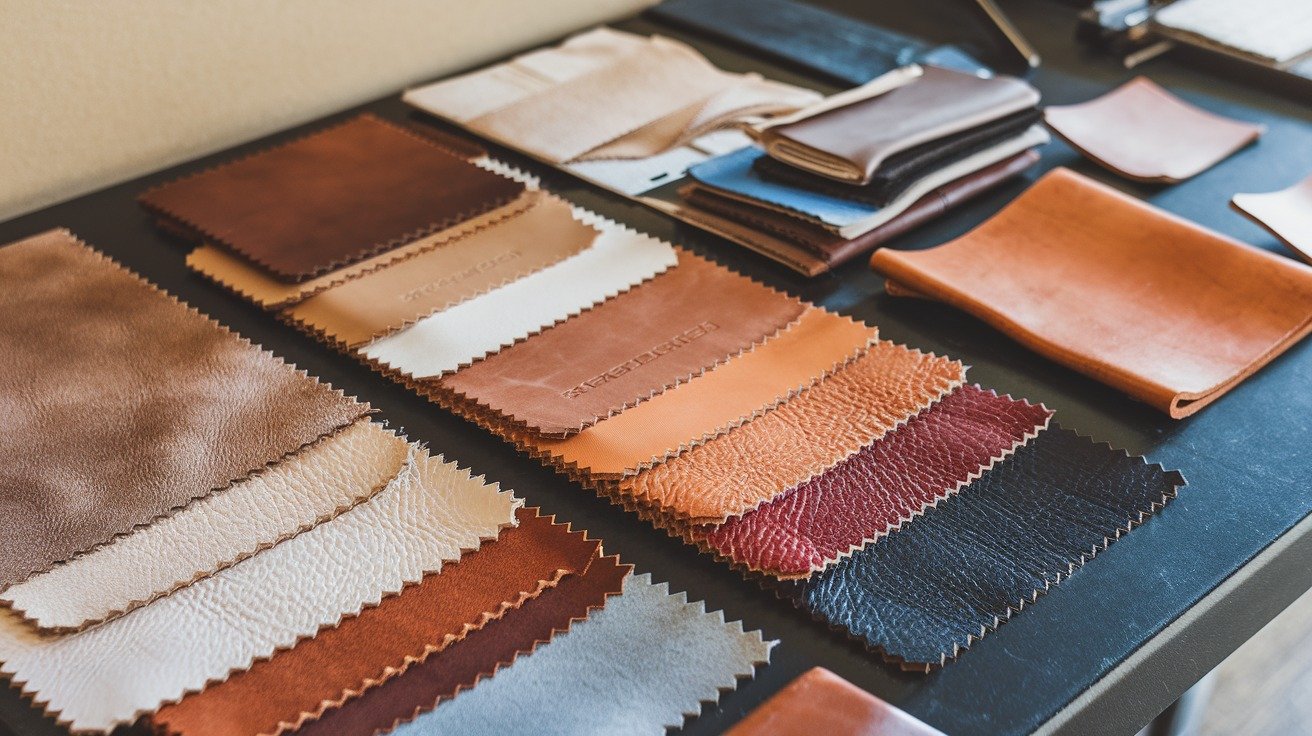
Blog
Different Types of Leather and Their Uses

When the question is about leather most people find themselves being spoiled with a wide buffet of options to make. In this article, different types of leathers such as genuine leather, synthetic leather, and PU leather, are described with their features, usefulness, and application. Knowledge of the various types of leather is useful when one is selecting them for purchase of jackets, bags, furniture or other articles made of the material. The next guide will put you through the basics to enable you to choose the right type of leather in the modern world.
Introduction to Leather Types:
Leather is one of the more popular materials mostly because it is both tough and beautiful and quite flexible. Consequently, many forms of leather have been developed over the years, all intended for various purposes from preference point of view. Without further ado, here is a take on the prevalent categories of leather in the market.
Full-Grain Leather - The Pinnacle of Quality:
They come in three varieties: Some kind of hide with the hair on it – this is the best you can get, full-grain leather. Crafted from the outer layers of the skin of the animal it has a natural grain pattern on the surface which causes it to be very tough. Here’s why full-grain leather is worth considering:
Characteristics: Materiality, purity of the grain.
Durability: Very long-wearing; only looks better the older it gets.
Common Uses: Furniture for at as, branded handbags, and branded leather jackets.
As full-grain leather is not sanded or buffed in an attempt to erase imperfections due to the hide, the leather usually retains these flaws giving it individuality. Yet it is slightly priceyer than other types, thus its utilsation in making from luxury items.
Top-Grain Leather - Quality with a Smooth Finish:

Top-grain leather is the second best quality of leather, there are a lot of similarities with full-grain leather. Manufacturers create it by processing the hide through sanding and polishing to achieve a uniform complexion, making it slightly less substantive than full-grain leather.
Characteristics: Slightly smoother than full-grain, being thinner than the latter.
Durability: Slightly less than full-grain but very durable.
Common Uses: Cosmetics, clothes accessories, furniture and car interiors.
Manufacturers may finish top-grain leather with a coating to enhance. Its usability for products like bags, wallets, and furniture, where appearance and durability are important.
Genuine Leather - Budget-Friendly but Lower Quality
- Genuine Leather: This method is cheaper than the previous one but enables the purchase of lower quality product.
- Splits: Manufacturers strip away the outermost layers to obtain genuine leather jacket from the remaining ones. This process makes genuine leather more affordable, though it lacks the luxurious quality of full-grain leather.
- Characteristics: It usually has a porous structure, giving it an appearance that sometimes seems artificial.
- Durability: Slower wearing grade, they can wear out quickly than the more durable ones.
Common Uses: Affordable designs; bags, belts, wallets and other small leather products.
As compared to real leather it is a cheap or lower quality material but preferred by many at an affordable price for leather products.
Bonded Leather - Eco-Friendly but Less Durable:
Bonded leather combines leather straps and fibers bonded together with glue and sometimes laminated with polyurethane.
Characteristics: Artificial leather, inferiority.
Durability: Not very long lasting, may crack or peel.
Common Uses: Some of them include; Low cost furniture, bookbinding and some accessories.
Since bonded leather uses recycled leather fibers, it is more environmentally friendly; however, it lacks the durability of other types.
Suede Leather - Soft, Velvety, and Stylish:

Suede leather, a type of furniture leather, comes from the inner side of animal skins and has a very smooth surface. It makes it common in fashion jacket for sale clothes due to its texture and feel and it is more sensitive to staining and for that; one needs to be very careful with it.
Characteristics: Soft, velvety surface.
Durability: Delicate, prone to staining.
Common Uses: Shoes, jackets, and the fashion accessories.
Now, suede is very much attractive, but for areas that require you to work hard it is not very suitable. In order to preserves suede, the regular cleaning and covers based on it are necessary.
Vegan Leather - Animal-Free and Environmentally Sustainable Choices
Vegan leather or fake leather is a material that does not contain any animal products at all the polyurethane (Pu) or polyvinyl chloride (PVC).
Characteristics: Utility, looks like genuine leatheriest.
Durability: The type of material used directly affects its effectiveness. some are very long lasting.
Common Uses: Clothes, shoes and bags, furnishing, car seats etc.
It is also good for people who prefer to have vegan leather products Thus it encourages people to use vegan leather goods. However, the way it does so varies, with PU material generally considered better than PVC, though PVC is used more frequently.
How to Pick the Right Material for Your Use?
The choice of leather depends on several factors, including cost, purpose, and personal preference. Full-grain and top-grain leather is perfect for people who want to invest money in a Leather quality product which will last for years, while genuine leather is cheaper. Suede offers a smooth glamorous touch but is somewhat tricky to maintain; vegan leather is good for individuals who prefer products from synthetic sources. It is possible to recognize all these differences in order to help you choose the right type of leather for your purpose.
